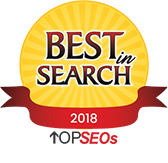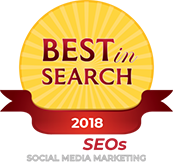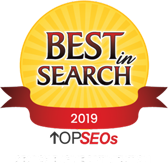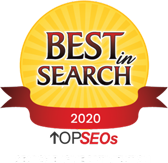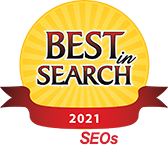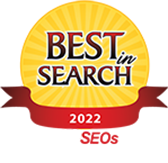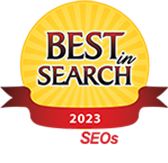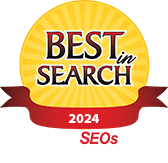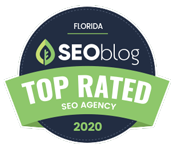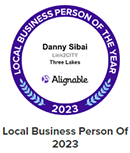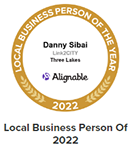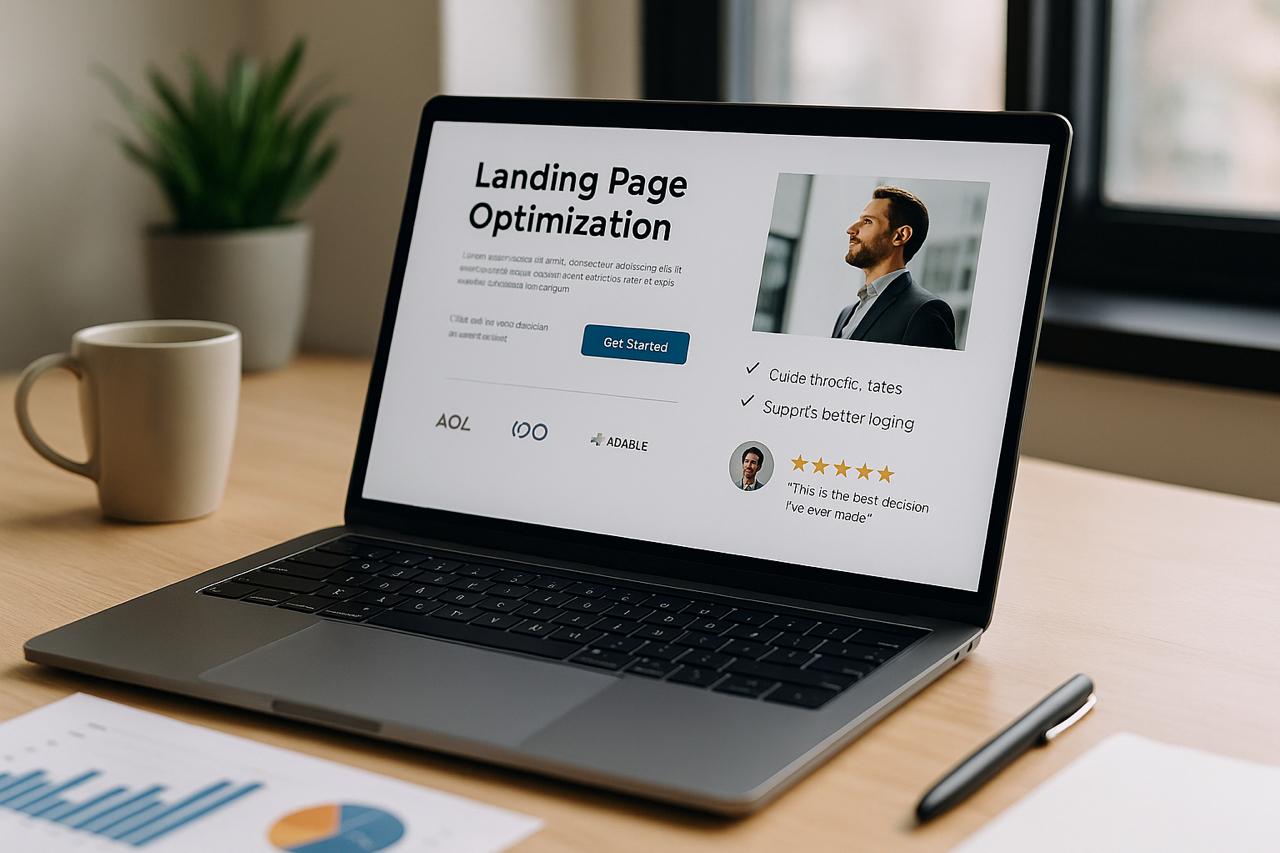
Key Elements of a High-Converting Landing Page
One of the elements that really help conversion strategies and SEO to meet in the middle is the core components of a good landing page.
1. Compelling and Relevant Headlines
Upon arrival, the headline is the first thing they should see. The reader pays facial attention to the noise, which should bring about interest; it must meet intent. Hence, the ideas will draw from the goal on the main page where this heading is to be found, rich with little keyword stuffing without looking like spam. Together, the highest and most significant positive SEO signals, both of improving user engagement with a website and of significantly diminishing bounce rates.
2. Clear Value Proposition
Once they've opened your page, they need to know immediately what you are offering and what makes it essential to them. In a single likely paragraph or bullet list, show them what makes your product, service, or resource valuable. Use search-engine optimized Web content by arranging in plain language, placing semantically related keywords.
3. Engaging Visuals and Multimedia
Since multimedia formats usually instantly convey the information, images, video, and infographics distract the potential clients or readers through their different emotional dimensions. Use compressed, mobile-optimized images with descriptive alt tags that are accessible and SEO-friendly.
4. Persuasive Call-To-Action (CTA)
Having explained all that; when someone steps onto your worksheet, they have some idea about what to do next – whether it be downloading a white paper, completing a form, or making a purchase. When someone reads those words and sees the CTA, there is also a good chance of them finding some buttons or links in between their lines.
5. Minimal Navigation
Remove as many elements as are not necessary from the landing page. Leave only one or at the most two items that should lead visitors away from it. This helps to concentrate their attention, thus enhancing the conversion rate and further driving home the words on your SEO-friendly Web content.
6. Trust Signals
Credibility takes the lead in building trust, and this can be achieved by:
- Customer testimonials
- Trust badges or security logos
- Media mentions or awards
- Client logos
Decrease skepticism and aid in decision-making on which conversion and brand trust rely heavily.
Best Practices for Landing Page Optimization
Let’s now build the best landing page based on what we have learned about individual elements. Some common ones are technical SEO, UX design, and strategic marketing.
1. Optimize Search Intent
To make your landing page successful, you have to look for the search-specific motive behind users examining your site. Whether they are looking for data, comparing offers, or are prepared to buy, your content and design should guide accordingly.
2. Use Keyword-Centric URLs
Build intention-oriented keywords for good indexing in searchable algorithms. Use some keyword-rich URLs such as short and informative URLs to represent targeted keyword types; for example, "/landing-page-optimization" in place of "/page?id=249."
3. Form SEO-Friendly Metadata
Your Meta descriptions and title tags should contain the special keyword associated with landing page optimization to prompt a visitor to actually click through it. Don't overlook good practices for categorizing meta descriptions-keep it as a small description with less than 1 or 2 lines, and draw attention to what the user might realize from it.
4. Utilize Responsive Design
Mobile-first Adaptive is not an alternative; it is the norm today. It is now essential that landing pages cater to all devices, their sizes. More than fifty percent of all online searches occur on mobile devices, and Google uses mobile in its ranking algorithms.
5. Quick Page Speed
A quicker loading speed only benefits the visitor but benefits websites in terms of rankings as well. For the first, don't use images that are compressed in kilobytes, disable all scripts not used, and asynchronous loading must be used for all third-party elements if you want content to load within 3 seconds on your landing page.
6. A/B Experiments should be implemented
For attaining the best outcomes, an ongoing pitting of one idea against another is mandatory. One could be testing various types of headlines, colors, and styles of CTA buttons, format of form, and alignment situations. Innovatively test using Google Optimize, Optimizely, or VWO. Small tweaks bring big results in conversion rate.
7. Insert internal Links
Insert internal links to other related resources such as blog articles or product pages. This enhances crawlability and user journey, hence a stronger SEO signal. Understand readability of the internal links you are inserting in the content.
8. Add Structured Data
Use schema markup whenever possible; this will especially hold true for reviews, questions, and answers, and products as well. With rich snippets structured data, Google can have a better understanding of your content, too.
Common Landing Page Optimization Mistakes
Mistakes can happen to all kinds of experienced marketers when improving the landing page. Here are a couple of pitfalls:
1. Use of keywords too many times
Keyword stuffing might have worked a decade ago, but that's not the case today. Let your targeted keywords be used organically- landing page optimization isn't something you will want to overuse. Consider content that flows naturally according to your perspective of the user.
2. Forgetting to target mobile users
You will be alienating more than half of your audience if your landing page looks good on a PC but is cumbersome on mobile. Always preview for mobile response as you optimize in the course of development.
3. Failure to take analytics seriously
You cannot possibly optimize your landing page unless you are acquainted with all the metrics that help you measure its performance, whether it is bounce rate, scroll depth, or conversion rate. Set up goal tracking in Google Analytics or GA4.
4. Use of multiple CTAs
Usually, a landing page has only one main purpose. Having too many CTAs can distract a visitor and break their focus, which could mean fewer conversions. Focus on the action you want visitors to take.
5. Reduction in the speed of loading pages
Slow pages annoy users and prompt them to leave. A single second of delay can result in a 7% drop in conversions. Optimize your hosting and caching, and trim down the number of frontend elements to enhance performance.
6. Forgetting to Test Form Fields
Long, unnecessary form fields could discourage users. Ask for only information that is absolutely needed. Short forms improve submission rates for a very wide margin.
7. This is where people use the wrong pictures or go with stock photography.
Pictures can tell stories but only do so honestly. Use high-quality and relevant images, not some cliche stock photos. This would improve credibility and engagement, wouldn't it?
Real Examples of Landing Page Optimization Success
Outsmart your competition with these three brands that remarkably amplified their ROI through savvy improvements in the landing page:
Case Study 1: A SaaS Company Sees a 38% Increase in Signups
A 6-week period resulted in an improvement in headline, a reduction in form length, and the inclusion of video testimonials, increasing conversion rates to 16.6% from 12% for this SaaS company.
Case Study 2: E-Commerce Store Uplifts Revenue Per Visit
Lean Retailer installed exit intent pop-ups, made mobile responsive adjustments, and put in FAQ with GSC marked semantics inside - a 25% growth in revenue per visitor for an annuity.
Case Study 3: Bounce Rate reduced Sales for Lead Generation Business
Clearing up of cluttered menu, new CTA section design, and optimizing images were done on a lead gen site. This resulted in a 40% reduction in bounce rate, and the site received double the leads.
Best Practices for Landing Page Optimization
For robust landing-page optimization, follow a best practice method of tested and data-driven strategies alongside knowledge about user behavior. Do the following to attend optimized pages effectively:
- Speed Always Comes First: Your loading time has a direct impact on your SEO rankings and user experience. A single slow-loading page is enough to drive visitors away and render your content useless. Sorry to say, but you just need to learn it and fix it. One way to do this is through tools such as Google Page Speed Insights, which will show you where you are going wrong. For example, you might decide to compress those images or cut away all the bloat in coding.
- Creative, Catchy Headlines Help: It's what any user sees first. Make sure to present a benefit and include your primary keyword in a natural way. "Enhance SEO Rankings with Targeted Landing Page Optimization" is a better headline to persuade those visiting your site to stay and read.
- Above-the-Fold Content Optimization: The value of your offering must be realized without the scroll (the first screen should include key messaging, clear CTA, and trust-building evidence like testimonials, security compatibility logo, etc.).
- Ensure Responsive Design Is Implemented: Your landing pages need to be responsive to different screen sizes; this is because a staggering 52% of global web usage is conducted on mobile devices and requires a well-executed function on mobile devices, which could be done through a responsible, user-friendly playing field as far as SEO is concerned.
- Combine SEO-friendly Copywriting Techniques: A proper use of headers, meta description, internal linking, and a proper placement of the keywords to have readable and contextually correct landing content, driving exposure to most by increasing sustainability of organic traffic.
Common Mistakes in Landing Page Optimization
However, pitfalls are also available, which can negatively influence your efforts even when you optimize a landing page thereby. You must understand these blunders before you make them; here they are:
- Overstuffing: This is when keywords are used in a non-native way, which distracts from readability and also triggers potential implications for search engines. It should be remembered that integrating keywords about SEO friendly web content is a much more sustainable strategy than jamming too many instances of the keywords.
- Call to Action Not Clearly Defined: Visitors may not know where to go next with the call to action. A well-powered call to action like "Download Your Free Guide " and" Start My Trial" should definitely boost the conversion rates.
- What Is User Intent?: In 3 seconds, users decide if they have found what they are looking for. Research of the best keywords and intent mapping must be done.
- A/B Testing: Experiment with different styles and CTA positions, and different titles until you reach a point where you no longer wonder whether free shipping should be put in bold and at the end of your content.
- Mobile Experience Ignored: Your landing page needs to work on mobile; otherwise, it's leaving a big chunk of your audience out in the cold and tossing SEO potential out as well.
Case Study: Optimization in Action
Let's suppose a digital marketing blog that covers How-To Guides & SEO Tips. The website wasn't converting its traffic into newsletter signups-something unexpected given the strength of the traffic. The following optimization changes were brought in through landing page optimization:
- Inset a clear, benefit-based headline targeting keywords like "SEO-friendly web content tips."
- Include a CTA that positions above the fold and at the end of the page.
- All the images had been needed to be optimized on that page. Include some text to cleaned up codes and improve page speed.
- For easier use on smartphones is to extend the design for better usability.
- To optimize search visibility, synthesis has been applied in structured data.
The outcome, though, was a significant increase in conversions by 47% and a 22% longer time on the page-another proven truth that with proper execution, optimization strategies go much further than most people think.
Tools to Enhance Landing Page Optimization
Several of the best tools to simplify and empower your efforts in landing page optimization include the following:
- Google Analytics: Gives you an opportunity to know and understand bounce rates or conversion funnels so that you can easily determine the efficiency of your landing page.
- SEMrush or Ahrefs: A complete end-to-end solution for keyword gap identification and a greater understanding of the formulation gap in search-engine friendly web content.
- Hotjar or Crazy Egg: These visual tools by means of heat maps and session recording identify the friction points of users on your page, thus making it possible to see at what point the user is abandoning the page.
- Unbounce or Instapage: Develop several landing page versions and run tests without getting stuck in developmental issues with your team.
Final Thoughts on Strategic Optimization
In such tight How-To Guides, & SEO Tips, there exists something more to landing page optimization itself rather than yielding incremental gains: that it leads to something large and scalable. With an amalgamation of good SEO practices, best messaging, and design, you make an experience thus liked by users and engines. Such changes are expected with trends and algorithms, for which your landing pages be a change master—always keep up-to-date and remain competitive and relevant.
Landing Page Optimization: Turn More Visitors into Customers
More than revamping design, landing page optimization is all about meeting your site aligned with the search intent of your audience. When put together with SEO-friendly web content, this is a highly compelling combo for pulling in traffic, retaining interest, and converting visits into firmly loyal customers.
Why Every Business Needs Landing Page Optimization
In this digital era, the first impression counts; and that first impression is usually the visitor's first brush with the brand. Optimizing ensures that the page be visually appealing and deep in functionality, making it resonate well.
Whether you’re in eCommerce, lead generation, or SaaS services, the result of making sure that your landing page is correctly optimized would be wonderful products with sufficient usability to rise in the ranks of search engines.
Best Practices for High-Impact Landing Pages
It should be properly done technically, as well as in marketing knowledge.
Those are the carefully selected best practices to go over:
- Clear and Action-Oriented Headlines: A headline should summarize the bottom-line value of what you're offering in a second.
- Use SEO-Friendly Web Content: Get relevant keywords on the page in a natural way and think-out your headers, along with bullet points on how your content is laid out.
- Better Conversion Rate Design: Use such lines of perspective that will lead to minimum distractive elements, evidence different participants are locating CTAs by having good visibility, or what calls that come in to other visitors.
- Use A/B Testing: Consistently test different layouts, messaging, and CTAs for assessing what works better.
- Improve Loading Time: A slow page is a lost lead. Use Google PageSpeed Insights ]to confirm that your page opens right away.
How SEO-Friendly Web Content Enhances Optimization
SEO-friendly content, by nature, makes your page show up at the top of the charts on the search engine. This is also how one uses a little of everything in good measure: Google's quality attention just can't get past relevance, keyword placement in the message, and readability stated in the writer. Besides that, should also be the topnotch content in informatic high quality.
Content itself will be a big data point for any SEO. There's a general notion that search engines will rank and prioritize content based on how they think it addresses the user's question—that's the essence of your implementation on the landing pages. Make sure that the search terms your audiences use lead them to your site and that your site is crawlable and structurally intact.
For instance, an optimized healthcare services landing page might include the detail on specific treatments or procedures, physical service locations, and even patient outcomes-all captured neatly within the web copy. It can further be boosted by linking to related resources such as industry articles or downloadable guides.
Measuring the Success of Optimization Efforts
How do you know if your efforts are paying off? Several KPIs can tell the story:
- Conversion Rate (CR)
- Bounce Rate
- Time on Page
- Traffic Source
- Scroll Depth
Use tools such as Google Analytics, Hotjar, and SEMrush to track these elements and fine-tune your strategies. Remember: smarter optimization leads to better user experiences and greater ROI.
Frequently Asked Questions
What is landing page optimization in simple terms?
Landing page optimization is a strategy or concept used to improve SEO-friendly web content through structured and intentional methods.
How does landing page optimization help?
It improves performance by aligning your content with search behavior and industry best practices.
Can I apply landing page optimization on my own?
Absolutely. With the right tools and structure, even beginners can effectively implement these principles.
What tools should I use?
Start with Google Search Console, SEMrush, and keyword research tools. These help you understand how landing page optimization impacts your performance.
Next Steps
If your landing page isn’t converting at the rate it should, it’s time to act. Whether your goal is more leads, purchases, or sign-ups, optimization is the key to greater success. Don’t let your prospects slip away due to underperforming web content or poor design.
Ready to grow your business digitally? Let us improve your landing page and boost your bottom line today.




